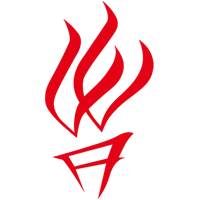Best Practices: Is There A Better, Faster Or More Profitable Way?
By Mark Powers & Shawn McNalis
“Check the financial status of each case during your case status review meeting. That way the team knows in advance if a client has stopped paying and doesn’t rack up hours on an unfunded case. This will not only give you an early warning to resolve the financial situation with the client, it will save you enormous amounts of time, money and energy that would have otherwise been wasted.”
Good idea.
“Hire someone to help with your marketing – a sort of para-marketer. That way you and your team aren’t burdened with the day-to-day logistics of marketing and can focus your time on production while leveraging your effectiveness in client development.”
Another good idea.
“Everyone knows that preparing for and acting as if you’re going to trial is critical — even if you settle. But not everyone gives themselves enough time. To give yourself the time, work backwards from your trial date and calendar ahead of time the chain of events that leads up to your trial. This way you’ll give yourself plenty of time to prepare yourself, your witnesses, your trial notebook, your experts, etc. You’ll maximize the size of your settlements and/or verdicts by giving yourself more time to work up the case.”
Yet another good idea.
People are full of them. Put a group of attorneys in a room and ask each one to talk about their “Best Practices” — any method, process, activity or technique that has proven superior at delivering a particular outcome and it’s further proof that the collective mind will arrive at better solutions than any one of us individually. Listen in on any one of these well-attended sessions and you realize that superior methods sometimes spring from trial-and-error and the careful plotting of benchmarks. And sometimes they were the result of “happy accidents” which the attorney had the good sense to recognize and incorporate in a way that was repeatable.
However they are arrived at, most attorneys will tell you the good ideas they absorb in “Best Practice” sessions make the long lines at the airport, the hassle of being away from the office and the disruption of their routine, worth their while.
To even be interested in new methods, you must first buy into the notion that the law office can be thought of as a sort of manufacturing plant, with files, cases and matters moving like inventory through a production pipeline. (If you plan to one day drop hourly billing and adopt a value-pricing model in which streamlined efficiency is rewarded, you’d be wise to pay close attention to this model). Intertwined with this approach is the idea of continuous improvement: Clearing the bottlenecks, streamlining procedures and measuring your outcomes to produce the best possible results for your clients. By applying the proper procedures it is intended that the outcomes you desire will be achieved with fewer complications and unforeseen problems.
Groundbreaking work by physicist Edward Demings in post-war Japan, followed by extensive work in the United States, led to the understanding that an unwavering focus on quality and the application of a more scientific approach to manufacturing could save time, money and effort resulting in more profit for business owners. But does it hold true for law firms?
In his book, Out of the Crisis, Deming offered Fourteen Principles to transform business.1 Written well after his stint in Japan, and intended for the manufacturing sector in the United States who were much more resistant to his ideas, they nevertheless encapsulate the foundation of his philosophy. Many translate relatively easily to the legal profession, but require tweaking. As you read through them, ask yourself if your approach to systemizing your law firm is consistent with that preached by Deming many years ago.
- Create constancy of purpose toward improvement of product and service, with the aim to become competitive and stay in business, and to provide jobs.
- Adopt the new philosophy. We are in a new economic age. Western management must awaken to the challenge, must learn their responsibilities, and take on leadership for change.
- Cease dependence on inspection to achieve quality. Eliminate the need for inspection on a mass basis by building quality into the product in the first place.
- End the practice of awarding business on the basis of price tag. Instead, minimize total cost. Move towards a single supplier for any one item, on a long-term relationship of loyalty and trust.
- Improve constantly and forever the system of production and service, to improve quality and productivity, and thus constantly decrease cost.
- Institute training on the job.
- Institute leadership. The aim of supervision should be to help people and machines and gadgets to do a better job. Supervision of management is in need of overhaul, as well as supervision of production workers.
- Drive out fear, so that everyone may work effectively for the company.
- Break down barriers between departments. People in research, design, sales, and production must work as a team, to foresee problems of production and in use that may be encountered with the product or service.
- Eliminate slogans, exhortations, and targets for the work force asking for zero defects and new levels of productivity. Such exhortations only create adversarial relationships, as the bulk of the causes of low quality and low productivity belong to the system and thus lie beyond the power of the work force.
- Eliminate work standards (quotas) on the factory floor. Substitute leadership.Eliminate management by objective. Eliminate management by numbers, numerical goals. Substitute workmanship.
- Remove barriers that rob the hourly worker of his right to pride of workmanship. The responsibility of supervisors must be changed from sheer numbers to quality.Remove barriers that rob people in management and in engineering of their right to pride of workmanship. This means the abolishment of the annual or merit rating and of management by objective.
- Institute a vigorous program of education and self-improvement.
- Put everyone in the company to work to accomplish the transformation. The transformation is everyone’s work.
The Deming Cycle, also known as the Shewhart Cycle (Shewhart was Deming’s mentor), was a repetitive process to test practices before incorporating them into a system or procedure. Strictly speaking, to be considered “Best Practices,” procedures must have two important features. One, they must have proven successful for other users and two, they must be repeatable. If a practice fails to meet these two tests, it can’t be considered the best. It may be great in specific applications and for certain types of firms, but it won’t be considered universally applicable.
Careful analysis is needed before adopting any so-called best practice. One attorney’s best practice is not necessarily the best for another.
The four steps involved in Demings Cycle are known as PDCA: Plan-Do-Check-Act. He believed that new methodology should be approached on an experimental basis first with intensive planning preceding any new action. Once planned, the action should then follow specific, measurable and repeatable steps with the results thoroughly evaluated, or checked, before being adopted. It is nothing more than the scientific method applied to business processes if business people and lawyers — have the patience to apply them.
According to Atticus® Practice Advisor Gary Holstein, who has special expertise in this area, when considering the notion of continuous improvement for your law firm, it is helpful to consider what needs to be changed, as opposed to what is wrong. This approach allows for a more complete analysis and inspires fewer defensive thoughts regarding the notion of change. Remember, in order to implement new practices you must remember that there will be team members who are very attached to the customary way of doing things. The pull to stick with what has been done in the past is very strong.
Not surprisingly, most of Deming’s rules and his Plan-Do-Check-Act method of testing new practices are every bit as relevant in contemporary law firms as they were to manufacturers in the industrial and manufacturing age. Most lawyers are knowledge workers who produce some tangible work product. The compelling notion that there exists a better, faster or more profitable way to produce a desired result is neatly bundled in the idea of “Best Practices.” The rapt attention paid to speakers at any “Best Practices” session should be proof enough. For continuous improvement of your services, your work product and ultimately your reputation put them to work in your practice.
Footnotes
[1] Deming, W. Edwards (1986). Out of the Crisis. MIT Center for Advanced Engineering Study.



No Comments
Sorry, the comment form is closed at this time.